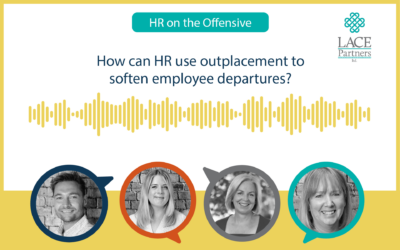Jenny Alburey, Co-Founder and Research Director, shares her perspective on the potential pitfalls of using technology and its impact on people.
Organisations are asking employees to use more and more technology at work. Whilst this can enhance the employee experience and improve productivity, it can also result in a negative spiral of behaviour resulting from our need for external validation. Just like when we receive a ‘like’ on Facebook, when we’re given a virtual trophy or computer generated ‘shout out’ by way of reward at work for doing well, we receive external validation which tells our brains ‘we’re great’ and it makes us happy. This is because we’re hooked on the chemical response our brains produce when we see that validation – dopamine.
Gaming addiction is now recognised as a mental health disorder
Subconsciously, we know the external validation isn’t real and that it is computer generated to make us feel good and repeat ‘wanted’ behaviours. However, the motivation brought about by likes and shares on social media and other computer-generated praise and reward, and the resulting dopamine response this produces, can have negative effects. It can limit the desire to create or experience intrinsic motivation and is so addictive that the UN has recognized gaming addiction as a mental disorder in the latest version of its the International Classification of Diseases. We then label and measure ourselves against this external validation rather than our internal self-opinion. We are effectively rewarded for being compliant.
Gamification has a role to play
Technologies such as gamification are not going away and nor should they – they hold a valuable place in technological society and in empowering people when they are used in the right way. However, for people to have balance from this heavily externally motivated technology, they need to have the opportunity to stay in a healthy chemical balance. This can be supported by providing opportunities for spontaneous play and to create moments of ‘awe’. Awe is the ‘wow’ moment we feel when we experience something, similar to what we may describe as feeling wonder.
When people are exposed to too much stress, including that brought about by being overloaded with sensory experience such as too much technology, their cytokines increase. Cytokines are the cell signalling molecules that assist cell to cell communication in immune responses; they are heightened through the exposure to too much technology. Research from the Greater Good Science Centre at UC Berkeley suggests that ‘awe’ can reduce pro-inflammatory cytokines, as can other forms of creativity.
Get the balance right
Employers who implement too many gamified/behaviourist technologies, with the aim of solely increasing productivity and performance, may find they experience higher employee turnover. It’s important to combine the technology approach with an empowerment or wellness provision for people.
The danger is that these same companies then invest in more of the same types of technology in a well-meaning attempt to retain their people and establish why they are leaving. This can further exacerbate the cycle of technology addiction, game fatigue, externalisation of reward systems and emotional burn out.
The power of understanding the balance
Companies can fail to proactively plan to include non-technological opportunities for reward. As a result, once the behaviourist technologies lose their sparkle and employees experience ‘game fatigue’, the dopamine response reduces and people feel less fulfilled. They understandably go in search of fulfilment and more validation, often by trying to make a change in their lives with a new job or more travel. People may be perceived as being ‘flighty’ and unable to settle, but it can be a result of responding to over-stimulus and the externalisation of their motivation.
This can be mitigated using gamified technologies in a better way, to empower people to take positive steps regarding their own health and wellbeing away from the screen, and empowering people to gain validation and balance in non-technological ways through company initiatives like actively encouraging screen breaks and the use of green, outdoor spaces.
Companies need to increase their awareness of the potential dependency and externalisation of employee motivation and consider their own motivations for investing in technology – ensuring that they use technology purchases to encourage and empower employee wellbeing. We partner with innovative companies who aim to ensure technology empowers people.
The tech-empowerment opportunity
I believe it’s critical that organisations build empowering habits to sit alongside the technology they use, as outlined in the infographic above.
In my view, organisations need to educate people to understand the impact on their mental health and openly encourage innovation and creativity in a safe space. We need to create healthy relationships with technology, putting in place systems that reduce abnormal body chemistry.
Companies such as Shine Offline create healthy relationships with technology so it really does empower people; helping organisations and individuals to avoid the health and wellbeing pitfalls of screen addiction. They have an approach that encourages people to also work offline and empowers them to revaluate, recapture and regain autonomy over their relationship with technology.
They have spotted the opportunity to help businesses understand the negative impact of a connected world on their people, culture and potential. They work to support employees to use digital technology in a healthy and sustainable way, taking back control and reclaiming some space so we can readdress the balance to ensure digital technology plays a truly enhancing role rather than overwhelming, distracting and exhausting us.
Another company, Sidekick Health, helps gamify (in a healthy way) posing questions like “Have you drunk water or gone outside today?”. With a little bit of prompting, you’ve had a timely physical and mental wellbeing boost. They help employers to deliver quality lifestyle change programmes that promote health and tackle chronic diseases.
With the increase in the use of technology at work and the predicted shortage of talent over the coming years, it’s critical that organisations put in place and support healthy relationships with technology. This needs to be part of their cultural offering to candidates and how they then live this in their daily work, throughout the employee experience.
Jenny Alburey, Research Director.









